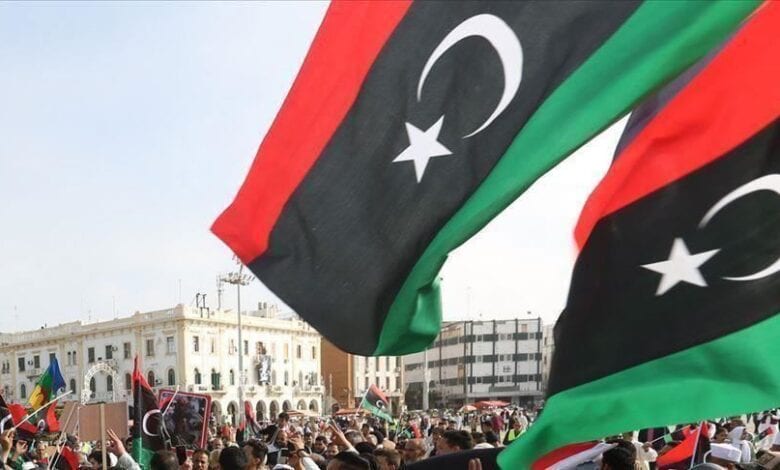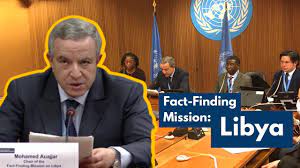
Attacks on Residential Areas and Civilian Facilities is a War Crime
Human Rights Solidarity (HRS) expressed its concern about the escalation of attacks on residential areas and civilian facilities in the city of Tripoli. Over the period from 1st December 2019 to 5th January 2020, HRS has documented 177 civilian casualties resulting from 18 separate attacks[i], 42 victims were either killed or injured in Merziq, al-Zawiyah, Mslata and Misrata, while the rest, 135, were casualties in Tripoli and its suburbs.
The high number of civilian casualties, with 71 civilians killed, including 14 children and 5 women, and 106 were injured, including 6 children and 7 women, raises the impression that targeting residential areas and targeting civilians might be deliberate, which makes these attacks amount to war crimes and crimes against Humanity, under International Humanitarian Law.
Khaled Saleh, a human rights researcher HRS, said “The persistence of the militias of retired Major General Khalifa Haftar to target civilians, especially since air strikes were the main cause of civilian casualties, indicates that there is no effort by the commanders of these militias to avoid civilian casualties, and even worse, that they are deliberately targeting civilians[ii]”.
Innocent Libyan civilians continue to pay the price for the failure by the “International Community” to fulfill its duty to hold the countries supporting Haftar accountable for violating United Nations Security Council resolutions regarding the arms embargo to Libya, and for the direct participation of some of them in in the conflict in Libya.
Giumma el-Omami, President of Human Rights Solidarity, said today that “unless the issue of impunity is addressed in Libya, we have fears that we will see more civilian victims. The Government of National Accord should take legal actions, starting with concrete and actual steps in cooperating with the International Criminal Court, and to take legal action, at the International Court of Justice, against the countries that support Haftar with Mercenaries, and direct participation in the attacks with their forces and military assets”. He added that “the recent statement by the Supreme Judicial Council[iii] of Libya, in which the Council described the situation as a ‘feud between brothers within the nation [Libya]’ and distancing itself from the conflict, caused the Public Prosecutors to halt taking legal actions in some cases, which further cemented the issue of impunity”.
The attack which targeted the Military College in Tripoli, on Saturday evening, 4th January 2020, is the most violent since the 1st of last December. The attack killed 30 cadets at the Military College and injured 33 others, some of them critical. A video recording[iv] of the moment of the attack, showed that the group of cadets were hit directly.
HRS condemns the decision of the House of Representatives[v], issued on Saturday, January 4, 2020, which authorized the “‘General Command of the Armed Forces’ to disable airports, sea-ports and land border entry points, which are under the control of ‘militias’,” and considers the decision as a call to target civilian infrastructure, which is considered a war crime under International Humanitarian Law.
HRS also condemns targeting civilians and targeting civil and service facilities, and requests the Security Council to direct the Panel of Experts on Libya established pursuant to Resolution No. 1973 (2011) to investigate the targeting of civilians by Haftar militias, and to investigate the role of the United Arab Emirates in the drone attacks[vi] in Libya, and its role in the attack on the Military College in Tripoli, which preliminary reports[vii] claim that a UAE drone carried out this attack.
[i] Al-Sawani (Tripoli): “3 children killed, and 1 injured”, 1st December 2019. Um al-Araneb (Merziq): “9 children and 2 women, one pregnant, were killed”, 1st December 2019. Al-Sawani (Tripoli): “2 persons killed & 10 injured killed”, 1st December 2019. Salahuddin (Tripoli): “A man was killed”, 16 December 2019. Misrata: “6 persons were injured”, 20th December 2019. Mslata: “3 persons were killed and 8 were injured”, 21st December 2019. Tajoura (Tripoli): “4 persons were killed and 15 injured”, 24th December 2019. Al-Zawiyah: “3 persons were killed and 10 were injured, including 1 woman”, 26th December 2019. Al-Hadhba (Tripoli): “1 person was killed and 6 injured”, 28th December 2019. Shurfat al-Mallaha (Tripoli): “1 woman was killed, and a girl was injured”, 29th December 2019. Abu Salim (Tripoli): “1 child was injured”, 31st December 2019. Al-Hadhba (Tripoli): “1 woman and 2 men were injured”, 1st January 2020. Kreymiyah (Tripoli): “3 persons were killed, 1 girl injured”, 1st January 2020. Al-Fernaj (Tripoli): “1 woman was killed”, 2nd January 2020. Shurfat al-Mallaha (Tripoli): “1 man was killed, and 6 were injured including 1 child”, 3rd January 2020. Sidra Road (Tripoli): “4 men and 1 woman were killed”, 4th January 2020. Al-Hadhba (Tripoli): “30 cadets were killed, and 33 injured”, 4th January 2020. Al-Hadhba (Tripoli): “1 girl was killed, and 1 child and 2 men were injured”, 5th January 2020.
[ii] Pro GNA captured Major General Mohammed al-Jugum on December 7, 2019, near the city of al-Zawiya, after shooting down his MiG-23 aircraft. Al-Jugum is the Mig-23 Squadron. Some of the air raids, which caused civilian casualties, were carried out by Mig-23 bombers, and some of them may have been piloted by al-Jugum himself. Details of the procedures they follow in selecting targets, the decision-making chain of command involved, and whether or not they have procedures for assessing the risk of civilian casualties, and who takes the decision to carry out the strike if the evaluation result is a high risk of civilian casualties. All of this can be revealed through the military prosecutor’s interrogation of Major General Mohammed Al-Jugum.
[iii] The Supreme Judicial Council: “Statement by the Supreme Judicial Council on the occasion of the completion of its new council” October 6, 2019.
[iv] Media Center “Operation Volcano Fury”: “Footage from the surveillance camera showing the first moments of the bombing … of a group of cadets at the Military College in Tripoli“, January 5, 2020.
[v] Libya Channel: “The House of Representatives votes unanimously to authorize the General Command of the Armed Forces to disable airports, sea-ports, and land border entry points under the control of militias”, 4th January 2020. Libya Channel is a satellite channel, based in Amman Jordan, and owned by Mr. Aref al-Nayed, Libya’s ex-ambassador to Abu Dhabi.
[vi] According to media reports of a video recording of “confessions” made by Maj Gen Mohamed al-Jugum, that he said “the drones that support Haftar, belong to the UAE. The drones are located at the air base of Kharouba [al-Khadim air base near Benghazi], where the entire Emirati crew is located”. He added “all the operations and command of the drones are conducted through the Emiratis, who execute the sorties and operations.” He stated that some Libyans are located with the Emirates at Kharouba air base. Maj Gen al-Jugum revealed in his confessions that “the Emiratis air force participated in the fighting Benghazi, Derna, and the South of Libya, and right through the military operation of Haftar on Tripoli.”
[vii] Media Center “Operation Volcano Fury”, published photos of the remains and fragments of the missile that targeted students at the Military College in Tripoli, according to some commentators (link), the fragments are of Blue Arrow 7 missile, used by the Chinese-made drones (Wing Loong) operated by the UAE.




